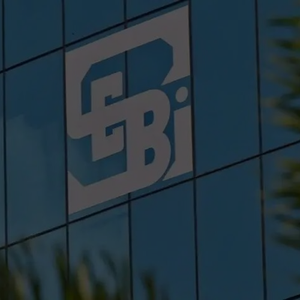SEBI update: Special Situations Funds

The Securities and Exchange Board of India (“SEBI’) has under its notification dated 24 January 2022 (“Amendment Regulations”) amended the SEBI (Alternative Investment Funds) Regulations, 2012. (“AIF Regulations”). Under the Amendment Regulations, SEBI introduced the concept of Special Situation Funds (“SSF”). Subsequently, SEBI issued the circular dated 27 January 2022 (“Circular”) in order to provide clarity to the SSF framework. The move comes against the backdrop of increased government efforts to provide alternatives methods to rescue businesses under financial stress.
Under the Amendment Regulations, SSF have been categorized as Category – I Alternative Investment Fund (“AIF”). SSFs will invest only in special situation assets in accordance with its investment objectives and may act as a resolution applicant under the Insolvency and Bankruptcy Code, 2016 (“Insolvency Law”). The following changes have been introduced by SEBI under the Amendment Regulations:
1. Registration – In order to act as an SSF, an applicant may apply for registration in accordance with the provisions of Chapter II of the AIF Regulations. This Chapter will be applicable to SSF, and schemes launched by such SSF.
2. Eligibility norms under the Insolvency Law – SSF intending to act as a resolution applicant under the Insolvency Law shall ensure compliance with the eligibility requirement provided thereunder. This will allow SSFs to participate in the resolution process contemplated under the Insolvency Law.
3. Special situation Asset – As per the Amendment Regulations, SSFs will invest only in “special situation asset” which includes stressed loans available for acquisition in terms of Clause 58 of the Reserve Bank of India (Transfer of Loan Exposures) Directions, 2021 (“Directions”) amended from time to time; or as part of a resolution plan approved under the Insolvency Law; or in terms of any other policy of the Reserve Bank of India (“RBI”) or Government of India issued in this regard. SSF shall also have the right to invest in security receipts issued by Asset Reconstruction Companies (“ARC”), securities of investee companies in distress and any other asset or security as may be prescribed by the Board from time to time.
In respect of SSF acquiring stressed loan in terms of Clause 58 of the Directions, the following is specified in the Circular:
-
SSF can acquire stressed loans once the same is permitted under the Directions;
-
Any investment by an SSF in the stressed loan acquired under the Directions shall be subject to minimum lock-in period of 6 (six) months. However, the lock-in period shall be inapplicable in case of recovery of stressed loan from the borrower;
-
SSF acquiring stressed loans in terms of the Direction shall comply with the same initial and continuous due diligence requirements for its investors, as those mandated by RBI for investors in ARC.
4. Conditions for investments in SSF – As per the Amendment Regulations, each scheme of SSF must have a corpus as specified by the Board i.e., INR 1,000,000,000/- (Indian Rupees One Billion). The SSFs are not permitted to accept investments from any other AIF other than an SSF. The minimum investment by an investor seeking to invest in an SSF is INR 100,000,000/- (Indian Rupees One Hundred Million), whereas in case of accredited investors it can be INR 50,000,000/- (Indian Rupees Fifty Million only). For investors who are employees or directors of the SSF or employees or directors of the manager of the SSF, the minimum value of investment shall be INR 2,500,000 (Indian Rupees Two Million Five Hundred Thousand).
5. Relaxation in investment conditions – Alternative Investment Policy Advisory Committee (“AIPAC”) while recommending the framework for SSF, analyzed Regulations 15(1) (c) and 16(1) (a) of the AIF Regulations. Regulation 15(1)(a) prohibits an AIF to invest more that 25% (twenty five percent) of its investible funds in any one company or another AIF; and Regulation 16 (1) (a) provides that sub-categories of Category I AIFs are required to invest at least 75% (seventy-five percent) of the investable funds in unlisted securities of investee companies. AIPAC was of the view that since it is very unlikely that an SSF will have a pre-defined investment strategy for different assets, especially when it intends to acquire such stressed assets for turnaround to revive the company, Regulation 15(1)(c) may not apply to SSFs and that SSFs may not be subject to any requirement to invest a specified portion of their investable funds in unlisted securities.
Therefore, taking into consideration the above recommendations, SEBI has relaxed the investment conditions provided under Regulation 15 (1) (c) and Regulation 16 (1) (a) of the AIF Regulations for SSF.
6. Investment Restrictions – The SSF shall not invest in its associates or in the units of any other AIF other than the units of an SSF. Moreover, SSF shall also not invest in units of SSF managed or sponsored by its manager, sponsor or associates of its manager or sponsor.
Our thoughts
The amendment introduced by SEBI provides another alternate structure for fund managers and investors to pool their resources and participate in turning around stressed businesses. This development will certainly benefit in the rescue of businesses not only under the Insolvency Law but also outside of it, as specialized pooled vehicles having expertise in rescuing stressed assets may invest in distressed assets much before the occurrence of any actual financial default. This in turn may increase the chances of successful rescue of stressed businesses as such rescues will be conducted outside the purview of any regulatory or judicial supervision and accordingly may be completed in a timely manner.
Authors: Souvik Ganguly
The information contained in this document is not legal advice or legal opinion. The contents recorded in the said document are for informational purposes only and should not be used for commercial purposes. Acuity Law LLP disclaims all liability to any person for any loss or damage caused by errors or omissions, whether arising from negligence, accident or any other cause.



